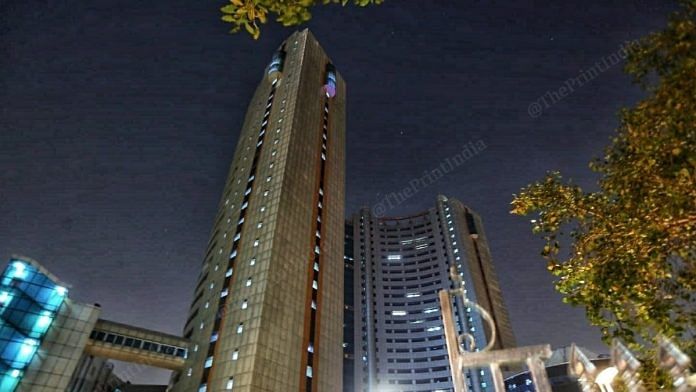From President Droupadi Murmu, Jawaharlal Nehru, Subhas Chandra Bose, to Vallabhbhai Patel, several of India’s well-known leaders began their public service careers as heads of municipal governments. The list also includes Chief Ministers like MK Stalin, K Chandrashekar Rao, Bansi Lal, BC Roy, Jagannath Mishra, Manohar Joshi, and D Devaraj Urs. Nearly 90 sitting MPs have served in local governments. Yet the office of the mayor remains weak and largely ceremonial, lacking the attention and authority needed to effectively lead cities in the 21st century.
In most Indian cities, the average citizen is more likely to know the name of the municipal commissioner than that of the elected mayor. A 2022 survey by Janaagraha found that fewer than two out of 10 Bengaluru residents could name the last mayor. This is not surprising, given that elected mayors lack both the authority and visibility they deserve as leaders at the first mile. Their roles are dwarfed by higher-level leaders like MPs and MLAs.
India’s mayors are denied even basic executive functions. They cannot plan holistically, approve budgets, hire or supervise staff, or direct civic authorities. According to the CAG, urban local governments (ULGs) headed by mayors on average have no control over 75 per cent of the powers constitutionally devolved to them. Many mayors, as in Maharashtra, Karnataka, and Himachal Pradesh, hold office only for 12–30 months. State-appointed municipal commissioners often exercise real control in ULGs. This, coupled with the multiplicity of state-controlled agencies like development authorities, utility companies, and infrastructure SPVs, reduces mayors to mere figureheads.
The weakened position of mayors leads to poor governance — marked by fragmented planning, duplication of efforts, delayed project implementation, resource wastage, and weak accountability. This ultimately diminishes the quality of life and ease of doing business in cities.
Globally, empowered mayors and local governments deliver better outcomes. In developed countries like the US, UK, France, Germany, Japan, and South Korea, directly elected mayors lead city transformation. Developing nations such as Brazil, Mexico, Indonesia, Colombia, and even China have vested substantial authority in city leadership.
India’s vision of becoming a developed nation hinges on empowered urban leadership. Cities contribute over 65 per cent of GDP and house more than 30 per cent of the population. Reforms are urgently needed to position mayors as CEOs of cities with clear authority, drawing from Indian and global best practices.
Also read: India is letting the AI revolution bypass the country. It may have to pay a heavy price
Need for reforms
First, we must adopt a cabinet form of government for cities, akin to those at the union and state levels. This includes five-year mayoral tenures and a Mayor-in-Council (MIC) system, where select councillors manage portfolios like finance, sanitation, transport, and health. India’s largest cities, including New Delhi, Mumbai, and Bengaluru, have mayoral tenures of less than five years and outdated governance models. Meanwhile, states like Chhattisgarh and West Bengal follow the MIC system. Evaluating this alongside the directly elected mayor model in place in Madhya Pradesh, Odisha, and Jharkhand, can inform improvements to strengthen the office of mayor.
Second, the mayor must have the highest executive authority in the city. Municipal commissioners should function like secretaries (just as the cabinet secretary at the union level and the chief secretary at the state level) — appointed by and reporting to the mayor, and accountable to the elected council. Parastatal agencies must come under mayoral supervision and council oversight to ensure democratic accountability.
Third, loopholes in electoral processes must be tightened. Only 40 per cent of ULGs across the 17 states audited by the CAG had elected councils. This is largely due to the discretionary powers of state governments in ward delimitation and reservation. State Election Commissions, therefore, must be empowered to oversee the entire electoral process, including ward delimitation and reservation, and elections for indirectly elected mayors. Anti-defection laws for ULGs, such as those adopted by Kerala, Odisha, and Karnataka, may be suitably adapted to ensure stability in the position of mayor.
Fourth, mayors and councils should be installed within 15 days of the declaration of election results. At present, delays may extend for months. In Karnataka, delays averaged 11 months for city corporations. To keep state executive excesses under check, the power to dissolve councils should rest with the legislature, not the state government. Any suspension or supersession must be limited to six months unless ratified by the state assembly, similar to the President’s Rule imposition in states.
Fifth, mayors and councillors shoulder significant responsibilities as first-mile elected leaders but receive a token honorarium of Rs 3,000 a month or less. Forty-six per cent of councillors in India are estimated to be women, and many belong to weaker sections of society. While a few states like Tamil Nadu and Maharashtra have increased monthly mayoral allowances to Rs 30,000, parity with MLAs and MPs — whose allowances range from Rs 1.5–2.5 lakh — is needed. Adequate financial support, trained staff, research capacity, and continuous training are essential to attract and retaining better talent for city leadership. National and state-level mayoral forums must be promoted for peer learning, as it’s done in states like Kerala.
Finally, vibrant citizen engagement through participatory budgeting and planning led by mayors and councillors must be embedded in urban governance. Ward committees, constitutionally mandated for larger cities, are mostly defunct. These, along with area sabhas, should be operationalised in all urban areas.
Many of these reforms must be enshrined in the Constitution by overhauling the 74th Amendment (Part IX-A), shielding them from political interference. Others should be integrated into state laws and operational practice. Only empowered executive mayors will be able to lead the urban transformation essential to India’s development goals.
Santosh Nargund is Director, Policy Engagement, Janaagraha. He tweets @nargundsantosh1. Views are personal.
(Edited by Ratan Priya)







They have less power than the bureaucrats themselves. Along with that no elections at the municipal level, whether Mumbai or Bangalore.